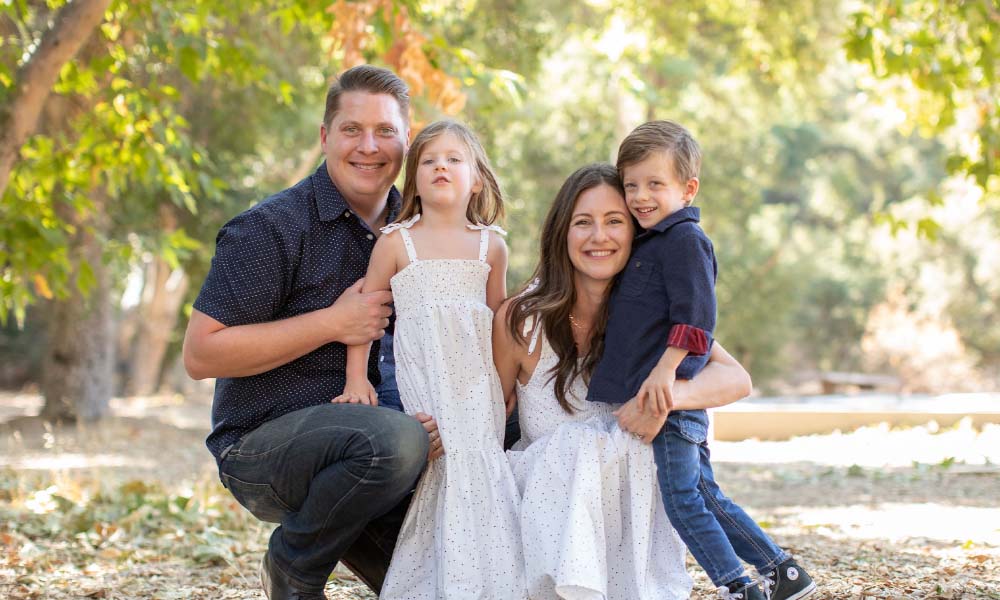When I took a just-in-case pregnancy test on New Year’s Eve, my partner and I were living in a tiny, one-bedroom apartment on a six-month lease in Puerto Vallarta, Mexico.
I’m originally from the United States but I’d been living mostly abroad, traveling nomadically for over six years. When the pandemic hit, I decided to settle down temporarily in Mexico. My partner is originally Canadian but has also been living abroad for nearly a decade.
That’s all to say: we didn’t have a home or a plan to stay in the same place beyond our lease that was up in three months. So when we were (pleasantly) surprised by those two little lines and a digital reading of “Embarazada”, we had no clue what we were going to do.
As I imagine most first-time parents feel, discovering that we were expecting was an overarching sense of ‘What the hell do we do now?’. But the immediate questions became: ‘Where are we going to give birth?’ and ‘Where are we going to live?’.
Unlike our many friends back in Canada and the U.S. who have been popping out children for the past five plus years, we didn’t own a home. There was no spare bedroom anxiously waiting to be turned into a nursery. Even if we wanted to buy a house, we didn’t (and still don’t) have any idea where we want to settle down permanently.
And while the discussion surrounding where we’re going to live is still very much up for debate, we knew we had to figure out – at the very least – where we were going to give birth.
What do we do now?
Almost immediately after discovering I was pregnant, I scoured Puerto Vallarta’s resources in a tizzy to find a doctor. I went on female-specific Facebook groups for expats in my area where I searched “English speaking OB”.
I found the name of a highly recommended OBGYN who I messaged immediately on WhatsApp. Three minutes later, the doctor replied to me himself. We set up an appointment to “see the baby” in two weeks, once I would be six weeks along.
When that appointment rolled around, we hopped in an Uber to his office in Puerto Vallarta’s trendy cafe-filled neighborhood called Versalles and sat down at his desk. It was 7 p.m. on a Wednesday, so my partner got to join without either of us having to take time off work.
For 45 minutes we chatted extensively about my health history, how I was feeling, and what to expect in the coming weeks. Then we walked to the other side of his office where I laid down for my first ultrasound and we saw the very beginning stages of our child.
What are our options?
With a more tangible understanding that this whole thing was, indeed, happening, the immediate question became ‘Where are we going to give birth?’. We had three choices.
- I have decent U.S. health insurance and an OBGYN I’d seen a few times in Florida, where my parents live. We would plan on spending as minimal time as possible in Florida before and after the birth. That was option one.
- Option two: My partner’s family lives in Calgary, Alberta. I wouldn’t be covered by insurance there, but the baby would be as soon as he was born. Again, we’d spend the minimal amount of time possible there.
- The third option was to stay put in Mexico where we would move into a bigger apartment and sign a full year’s lease while we figured everything else out.
The entire conversation became a weeks-long, back and forth, pros and cons debate. One day, it was for sure the United States. The next week it was definitely Canada. Honestly, Mexico was by itself in last place for weeks.
Pros and Cons
Canada
We both had the same initial reaction to the conversation. We needed to prioritize the health and safety of the baby over everything else. Simple, right? So we originally settled on Canada.
His youngest nephew had been a high-risk pregnancy and needed heart surgery shortly after birth in Calgary, and everything had gone well. The cost would wind up being similar to what I’d pay for my max out-of-pocket in the U.S. anyways. And the baby would be covered as a Canadian citizen thanks to universal healthcare.
As silly as it might sound to some people though, the idea of autumn and winter weather in Canada was petrifying to us. Despite having family nearby, Calgary is not a city that feels anything like home. We would need to somehow find a rental apartment for less than 6 months and the thought of giving birth somewhere that feels so foreign to me made me sad.
The United States
In Florida, the hospital we would give birth in has received numerous awards for its maternity care. In addition, we’d be close to my own mother who I knew I wanted with me for the birth. I was covered by health insurance with a reasonable out-of-pocket max, as well.
Despite the obvious pros of Florida, it didn’t sit right with me. I had my concerns about the U.S. healthcare system based on my desired birth plan. I knew I wanted to have a natural birth and I have never felt like the U.S. healthcare system prioritized my interests over time and money. C-sections make more money and induced labor is more convenient.
So while the baby would likely be well cared for in case of a real emergency at the U.S. hospital, I was more concerned for his health and safety (and my own) from being coerced into early labor or undergoing an unnecessary C-section. (Disclaimer: This was all contingent upon my pregnancy remaining low-risk.)
Deciding on Mexico
By the time our third visit with our OB rolled around at 12 weeks, we’d developed a great relationship with him. He knew my anxieties and assured me I could message him at any time, with any questions, no matter how silly. So when I had light spotting, I texted him. When I was having stronger than usual cramps, I shot him a message. When my test results came back positive for a UTI, he indulged my Google research on antibiotics and patiently explained the reasons behind his recommendations.
At our 12-week appointment, he talked candidly with us about where we wanted to give birth and the differences between the three choices. Even if we decided not to stay in Mexico, he assured us he'd be there to support us every step of the way. Without going over my birth plan, he openly shared his strong support of natural birth including delayed cord clamping, skin-to-skin golden hours, and everything else I had been prepared to ask him about.
We also found an incredible doula who is a certified lactation consultant and with whom we have a great relationship already. She’ll be the one doing our breastfeeding and birthing classes prior to birth. She’s intimately familiar with my birth plan and prepared to advocate for me every step of the way.
So by the end of that 12-week appointment and the start of my second trimester we had realized a few things:
- The level of humanity in medicine in Mexico is far and beyond what either of us had ever experienced in the United States or Canada.
- There was minimal difference in the quality of care available at the hospitals in Mexico vs. the United States vs. Canada.
- The cost of all three birthing experiences will wind up being within $500 of each other. (After insurance in the United States and out-of-pocket in Canada or Mexico)
- For the same total birthing price in Mexico, we will give birth in a private hospital with the help of a doula.
- We will be able to best care for our child with the support system we can afford to have in Mexico.



